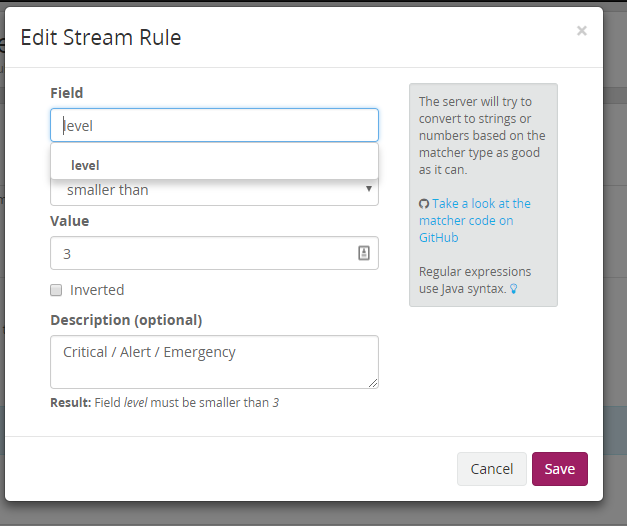Setting Up Graylog Server

I have been looking around for an easy to use and reasonable priced solution for managing logs distributed among many servers and system metrics for these servers. I had a brief look into setting up an ELK system but I found that looked quite cumbersome. Recently I came across Graylog and I found it looked quite promising. I thus set up a little sample system.
While the documentation for Graylog is generally quite good, I found it a bit difficult to piece together the various steps in setting up a minimal working system. Thus I have documented these steps below!
Installing Graylog and Dependencies
Just follow the excellent CentOS installation instructions from the Graylog documetation.
Make sure to provide details for sending emails under the header # Email transport.
If you are using a firewall, open ports 9000 for TCP and 51400 for UPD. For instance, by assuring the following lines are in /etc/sysconfig/iptables.
-A INPUT -p tcp -m state --state NEW -m tcp --dport 9000 -j ACCEPT
-A INPUT -p udp -m state --state NEW -m udp --dport 51400 -j ACCEPT
Don't forget to restart the iptables service: sudo systemctl restart iptables.
Collecting the Logs from Another CentOS System
- Install rsyslog on the system
sudo yum install rsyslog
- Enable and start rsyslog service (also see this guide)
sudo systemctl enable rsyslog
sudo systemctl start rsyslog
- Edit the file /etc/rsyslog.conf and put the following line at the end, into the section marked as # ### begin forwarding rule ### (replace yourserver.com with your graylog server address.
*.* @yourserver.com:51400;RSYSLOG_SyslogProtocol23Format
- Restart rsyslog
sudo systemctl restart rsyslog
The rsyslog log messages should now be getting send to your server. Give it a few minutes if you don't see the messages in graylog immediately. Otherwise, check the system log for any errors (sudo cat /var/log/messages).
Also, you can test the connection by entering the following on the monitored system:
nc -u yourserver.com 51400
Hi
This should result in the message Hi being received by graylog.
Analysing Logs
The next steps are quite easy to to since they can be done in the excellent graylog user interface.
- Configure your system as an input. Use UDP and port 51400
- Configure a stream. Select your input and configure that it will contain only servere messages:

- Create an alert. Trigger it when there is 'more than 0' messages in the stream you have just created.
Done! You are now collecting logs from a server and you will receive an email notification whenever there is a serious issue reported on the server!





